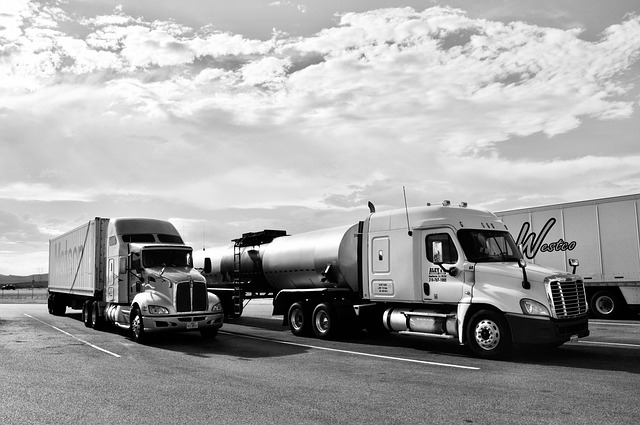Looking to register your car in California? Navigating the process can seem daunting, but with the right preparation, it’s seamless. This guide walks you through every step, from understanding the California car registration process and gathering essential documents for DMV VIN verification to scheduling an appointment and completing the necessary forms. We’ll also cover post-registration tasks and important considerations.
- Understanding the California Car Registration Process
- Gather Required Documents for DMV Vin Verification
- Scheduling and Attending Your DMV Appointment
- Completing the Registration and Title Application
- Post-Registration Steps and Important Considerations
Understanding the California Car Registration Process

In California, registering a car involves several steps that are designed to ensure vehicle safety and compliance with state laws. The process begins with a thorough DMV VIN verification to confirm the vehicle’s identity and history. This step is crucial as it helps in cross-referencing the Vehicle Identification Number (VIN) against records to ensure the car meets all necessary safety standards and has not been reported stolen. After passing this initial inspection, you’ll need to gather essential documents, including proof of insurance, a valid driver’s license, and the title or registration from the previous owner if applicable.
Next, visit your nearest California DMV office for what many call a vin inspection. This involves presenting your documentation and paying the required fees. The staff will check your paperwork for accuracy and complete any necessary forms. Once everything is in order, they’ll process your request, update the vehicle’s records, and issue a new registration certificate, which you must display on your vehicle at all times. Consider using a mobile vin verifier to streamline this process by making VIN verification faster and more convenient before visiting the DMV.
Gather Required Documents for DMV Vin Verification

To register your car in California, you’ll need to go through a process known as DMV VIN verification. Before heading to the DMV, make sure you have all the necessary documents. The list includes the vehicle’s registration certificate from its previous state (if applicable), proof of insurance, and a valid driver’s license. Additionally, you’ll require the vehicle identification number (VIN) report, which can be obtained through a mobile vin inspection or by visiting an authorized service center for a vin inspection.
During the dmv vin verification, the staff will cross-check your provided documents and the VIN to ensure everything matches. This step is crucial to establishing ownership and the vehicle’s history, so make sure all information is accurate. Having complete and correct documentation, including a properly conducted mobile vin verification or vin inspection, will streamline the registration process at the California DMV.
Scheduling and Attending Your DMV Appointment

Scheduling your DMV appointment is a crucial step in the car registration process in California. You can book an appointment online or via phone, ensuring a convenient time that suits your schedule. During your visit, bring all necessary documents, including proof of ownership, identification, and any required forms. The DMV will conduct a Vehicle Identification Number (VIN) verification as part of their inspection to ensure the vehicle’s authenticity and compliance with California’s regulations.
Attending the appointment on time is essential to avoid delays. A mobile vin inspection or verifier can be helpful if you face challenges in reaching the DMV, offering a more flexible alternative. This process streamlines registration, making it easier for you to get your car registered promptly while ensuring all safety and legal standards are met.
Completing the Registration and Title Application

Completing the Registration and Title Application is a crucial step in the car registration process in California. You’ll need to fill out Form DV304 (Application for Vehicle Registration), providing essential details about your vehicle, including its make, model, year, and unique Vehicle Identification Number (VIN). This number is vital for identification purposes and can be easily verified through a DMV VIN verification process, ensuring the car’s history and authenticity.
During this process, you’ll also be responsible for submitting necessary documents such as proof of insurance, a valid driver’s license, and payment for registration fees. Additionally, if you’re transferring ownership, you’ll require signed title documents from the previous owner. With these steps completed, you’re well on your way to securing your vehicle’s official registration in California.
Post-Registration Steps and Important Considerations

After successfully registering your car with the DMV, there are several important post-registration steps to complete. One crucial aspect is to ensure proper vehicle documentation. This includes updating your registration documents and maintaining accurate records. It’s essential to keep track of all relevant paperwork, such as proof of insurance, maintenance records, and any modifications made to the vehicle. These documents can be easily accessed through a quick DMV vin verification process, which allows you to confirm the vehicle’s identity using its unique Vehicle Identification Number (VIN).
Additionally, consider utilizing a mobile vin verifier or scheduling a vin inspection to ensure your car meets all safety and legal standards. This is particularly important for older vehicles or those with custom parts. A mobile vin inspection service can provide convenience by coming to your location, saving you time and effort compared to visiting a traditional inspection station. Staying proactive in these areas ensures a smooth ownership experience and helps prevent any future issues related to vehicle registration and compliance.
Registering a car in California involves several steps, from gathering essential documents for a successful DMV VIN verification to completing application forms. By understanding the process, scheduling an appointment, and paying the required fees, you can ensure your vehicle is legally registered and ready to hit the road. Remember to keep your registration up-to-date and follow post-registration steps for continued compliance with California’s regulations.
